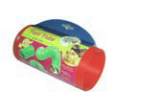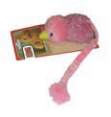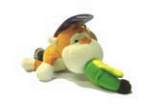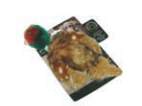Basic HTML Version





Guinea pigs originate in South America and
are used for food there. The translation of
ferrets' Latin name means ‘mouse eating
smelly thief’ but we know both of these
furry creatures as rewarding family pets.
Guinea pigs and ferrets can be housed
indoors or outdoors. Guinea pigs like hiding
places or shelters in their runs. Ferrets need
to be able to exercise in a ‘ferret proof’ play
area and enjoy playing in tunnels and bags. Runs and
hutches need safe, warm sleeping areas and must be
out of direct sunlight as both animals are susceptible
to heatstroke. Ferrets can be trained to use a litter tray,
whereas guinea pigs cannot and can be very messy,
requiring frequent cleaning out!
The dietary requirements of the two are
very different. Ferrets are carnivores and
designed to eat small prey animals. A diet
high in good quality protein and fat and
minimal carbohydrate and fibre can be provided
in pellet form with the addition of raw meat or eggs
as treats.
Guinea pigs, by contrast, are herbivores
and should be fed an appropriate pelleted
dry food plus ad lib hay and a variety of
leafy greens (kale, spinach, parsley) plus
red or green peppers, broccoli, tomatoes, kiwi fruit
and oranges to provide the essential Vitamin C
that they require.
Sweet treats and fruit should be kept to
a minimum in both species' diets. They
establish dietary preferences early in life
so correct feeding from the outset is
essential. Both require fresh water in a bottle or
heavy based bowl.
Both can be housed in pairs or small
groups. In mixed groups, male guinea pigs
should be neutered. Female ferrets can
be spayed or injected to prevent seasons
or mated by vasectomised males as
un-mated females develop
high levels of oestrogen
that cause bone marrow
suppression and death.
Both animals
make entertaining
pets and when
looked after
properly can give years
of companionship.
Caring for Guinea Pigs
and Ferrets
TOP
TIP
TOP
TIP
TOP
TIP
TOP
TIP
TOP
TIP
TOP
TIP
TOP
TIP
TOP
TIPS
by
Shona C. MacFarquhar BVMS MRCVS
Chapelfield Veterinary Partnership

